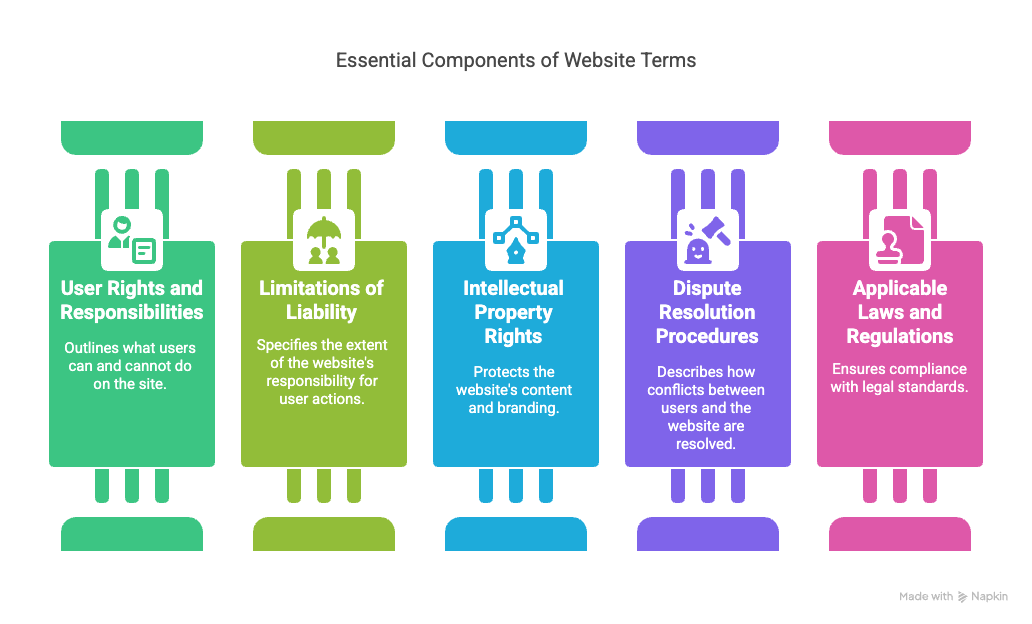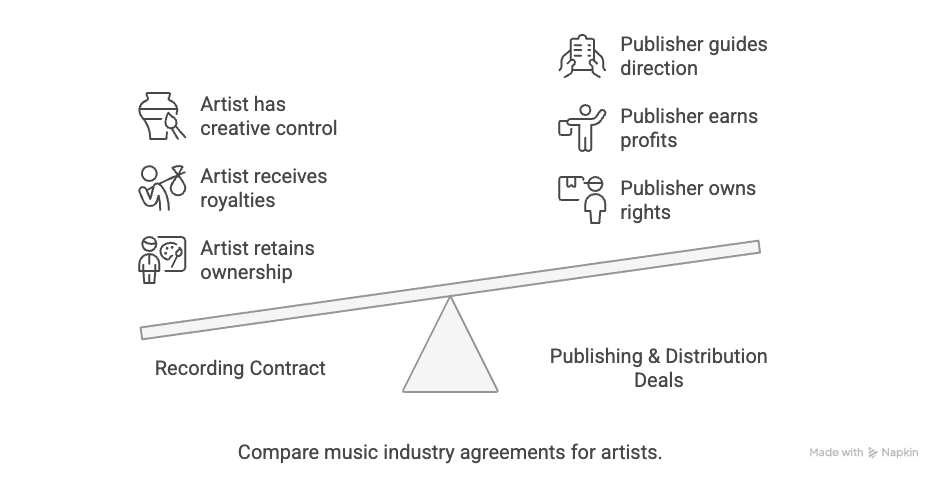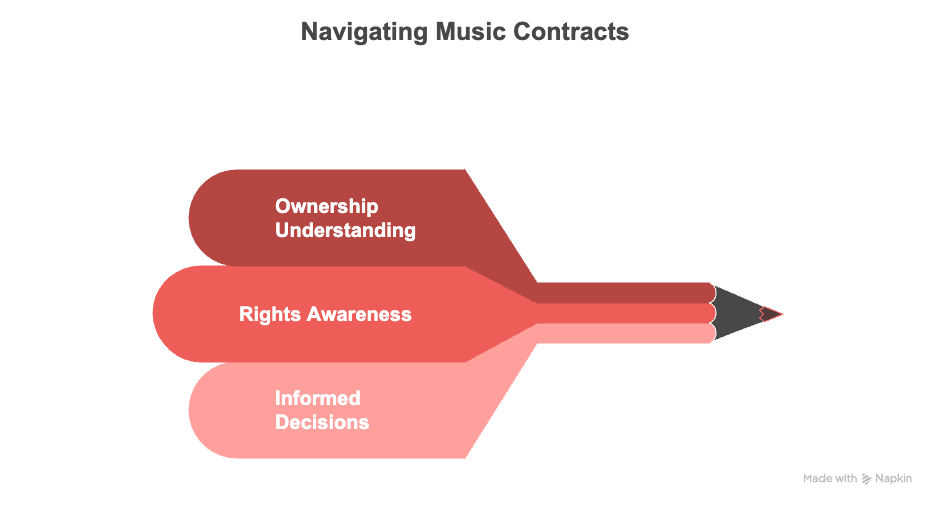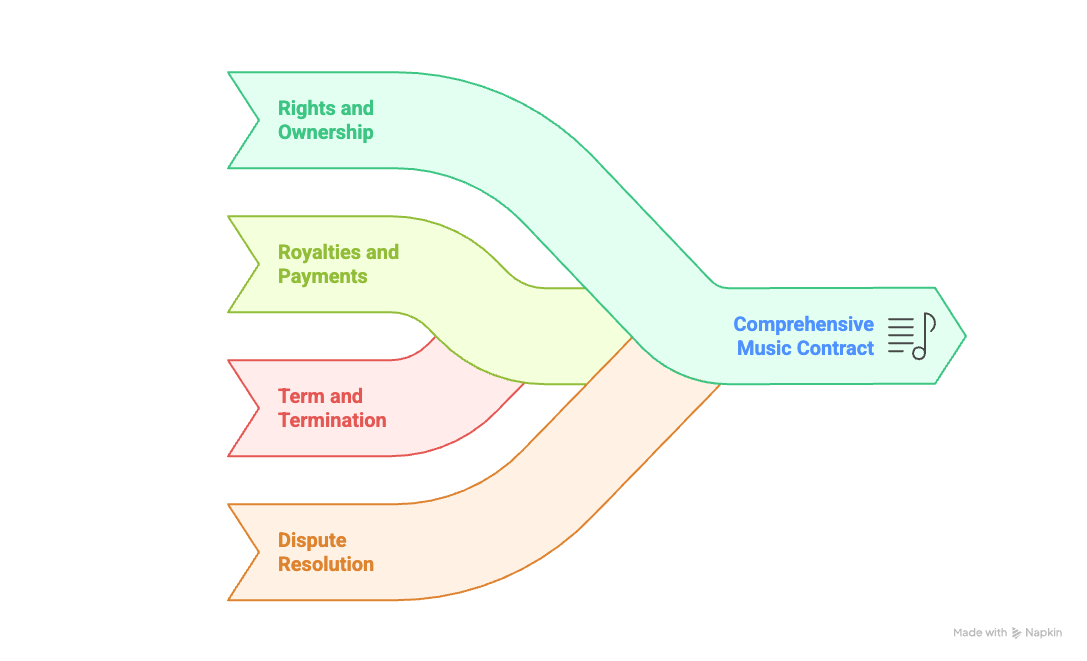
What Should Be Included In Website Terms And Conditions?
Last Updated on May 10, 2025
Website Terms and Conditions are not just legal formalities — they’re critical protections for your online business. Whether you’re running a SaaS tool, eCommerce store, blog, or digital membership site, your terms must clearly outline what users can expect, what you’re responsible for, and what they agree to by using your website. This guide breaks down the essential clauses every Canadian website should include.
1. Acceptance of Terms
Explain that by accessing or using the site, users agree to abide by your terms. Use clear, plain language, and make sure the terms are accessible from your footer, sign-up flow, or checkout process.
2. Intellectual Property Rights
Define who owns the content, branding, code, and trademarks on your website. Prohibit users from copying, reselling, or republishing materials without permission.
3. Acceptable Use Policy
List prohibited behaviors such as posting harmful content, attempting to hack your platform, or impersonating other users. This clause protects your site and your community.
4. Disclaimers of Liability
Clarify that your site and its content are provided “as is.” Disclaim responsibility for accuracy, service uptime, or any harm users may suffer from relying on your content or services.
5. Limitation of Liability
Cap your legal exposure to a reasonable amount, such as the price paid for your services. This is especially important for platforms offering paid memberships, transactions, or downloads.
6. Termination and Suspension
Include your right to suspend or ban users who violate your terms. This clause helps you maintain control over your platform.
7. Governing Law and Jurisdiction
State that your agreement is governed by the laws of a specific Canadian province (e.g., Ontario, British Columbia). This limits where and how disputes will be resolved.
8. Modifications and Updates
Let users know you may update your terms, and explain how you’ll notify them (e.g., email, banner notice, or updated date on the page).
Bonus: Optional Clauses to Strengthen Your Policy
- Payment and Refund Terms (for eCommerce/SaaS platforms)
- User-Generated Content Rules (for blogs/forums)
- Third-Party Service Disclaimers
- Cookie & Tracking Disclosure (link to your Privacy Policy)
Final Thoughts
Your Terms and Conditions should be custom to your website — not copied from someone else’s. They should reflect your audience, your legal jurisdiction, and your business model. Need help? Download our free Canadian-compliant Terms and Conditions template to get started.
Download the Free Website Terms And Conditions Template
Ready to apply what you've learned? Get instant access to the Website Terms And Conditions PDF - free, editable, and built for Canadian businesses. No sign-up required.
Frequently Asked Questions
Answers to common questions about What Should Be Included In Website Terms And Conditions?.
Do I legally need Terms and Conditions on my website?
They're not required by Canadian law, but they are essential for protecting your business, setting expectations, and enforcing rules.
Can I copy Terms and Conditions from another website?
No. Doing so may breach copyright and leave your site vulnerable. Your policy should reflect your business, risks, and legal obligations.
What’s the difference between Terms and Conditions and a Privacy Policy?
Terms and Conditions govern user behavior and your legal responsibilities. A Privacy Policy explains how you collect, use, and store user data.
Where should Terms and Conditions be placed on a website?
Ideally in the footer of every page, and during checkout, sign-up, or account creation to ensure visibility and acceptance.
How often should I update my website’s Terms and Conditions?
Review them at least once a year or whenever your website features, pricing, or compliance requirements change.
Explore More in Creative Digital Contracts
Discover curated templates in Creative Digital Contracts to help your business stay compliant and efficient.


